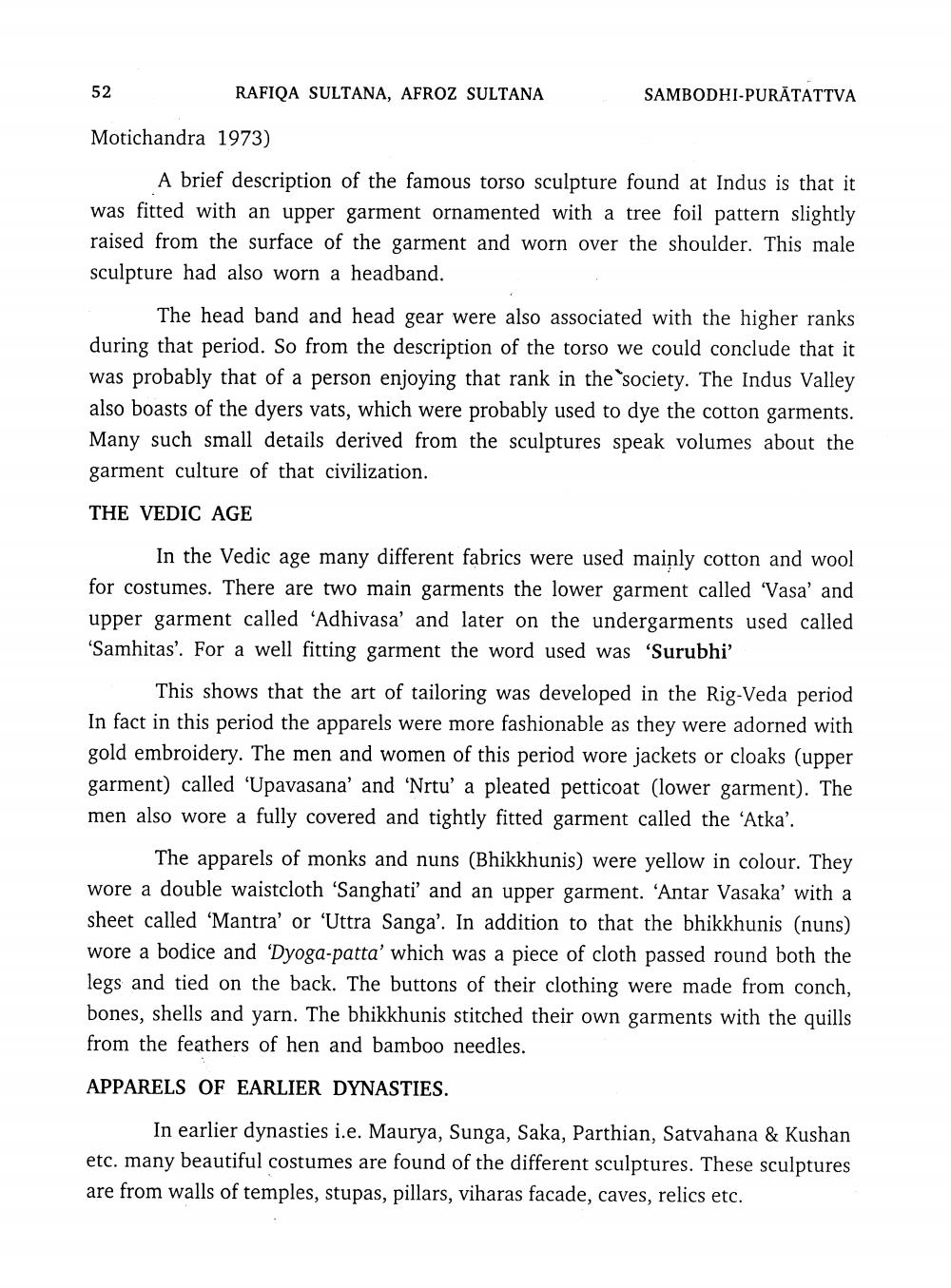________________
52
RAFIQA SULTANA, AFROZ SULTANA
SAMBODHI-PURĀTATTVA
Motichandra 1973)
A brief description of the famous torso sculpture found at Indus is that it was fitted with an upper garment ornamented with a tree foil pattern slightly raised from the surface of the garment and worn over the shoulder. This male sculpture had also worn a headband.
The head band and head gear were also associated with the higher ranks during that period. So from the description of the torso we could conclude that it was probably that of a person enjoying that rank in the society. The Indus Valley also boasts of the dyers vats, which were probably used to dye the cotton garments. Many such small details derived from the sculptures speak volumes about the garment culture of that civilization.
THE VEDIC AGE
In the Vedic age many different fabrics were used mainly cotton and wool for costumes. There are two main garments the lower garment called 'Vasa’ and upper garment called 'Adhivasa' and later on the undergarments used called 'Samhitas'. For a well fitting garment the word used was 'Surubhi'
This shows that the art of tailoring was developed in the Rig Veda period In fact in this period the apparels were more fashionable as they were adorned with gold embroidery. The men and women of this period wore jackets or cloaks (upper garment) called 'Upavasana' and 'Nrtu' a pleated petticoat (lower garment). The men also wore a fully covered and tightly fitted garment called the 'Atka'.
The apparels of monks and nuns (Bhikkhunis) were yellow in colour. They wore a double waistcloth 'Sanghati' and an upper garment. 'Antar Vasaka' with a sheet called 'Mantra' or 'Uttra Sanga'. In addition to that the bhikkhunis (nuns) wore a bodice and 'Dyoga-patta' which was a piece of cloth passed round both the legs and tied on the back. The buttons of their clothing were made from conch, bones, shells and yarn. The bhikkhunis stitched their own garments with the quills from the feathers of hen and bamboo needles.
APPARELS OF EARLIER DYNASTIES.
In earlier dynasties i.e. Maurya, Sunga, Saka, Parthian, Satvahana & Kushan etc. many beautiful costumes are found of the different sculptures. These sculptures are from walls of temples, stupas, pillars, viharas facade, caves, relics etc.




